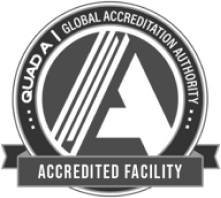Thigh Lift (Thighplasty)
The thighs can be a challenging area for both men and women to tone and tighten. Whether due to natural aging or significant weight loss, the loose and sagging excess skin can remain on the thighs. Our board-certified plastic surgeon Dr. R. Brannon Claytor can perform our Philadelphia thigh lift to contour your inner and outer thighs, smoothing loose skin.
What is a thigh lift?
A thigh lift (or thighplasty) is a surgical lift procedure performed to remove and tighten excess skin around the thighs in order to form a more aesthetically pleasing, proportional frame.
Dr. R. Brannon Claytor
Dr. Claytor is board certified by the American Board of Plastic Surgery and holds over 20 years of experience as a cosmetic plastic surgeon. An innovator and teacher in the field of plastic surgery, he uses advanced techniques like the drain-free tummy tuck and deep plane facelift to streamline recovery and provide natural-looking, durable results.




What are the different types of thigh lifts?
A medial thigh lift or an inner thigh lift contours the inner thighs. This thigh lift removes excess skin and lifts what remains.
An lateral thigh lift or outer thigh lift focuses more on the outer thighs. Often a more complex procedure, this lift is typically combined with liposuction to remove excess fat around the the buttocks and hips before tightening the skin.
What happens during a thigh lift procedure?
This plastic surgery requires surgical incisions along the thighs of varying size based on how much excess skin must be removed. The location of the incisions are usually around the groin area on the medial (inner) side of the thigh and can be adjusted based on clothing preference or the overall reduction of visibility. The procedure is typically performed under general anesthesia and takes anywhere from one to three hours depending on the severity of the loose, excess skin.
Before & After Gallery
Dr. Brannon Claytor uses advanced techniques to provide natural-looking outcomes. See the results for yourself in our patient gallery.
What should I expect after thigh lift surgery?
After surgery, thigh lift patients are dressed in a compression garment to limit swelling. You will be able to remove the garments and shower your first-day post-op. Discomfort is generally minimal in a smaller lift, but when large amounts of skin are removed, medication for discomfort aids in the recovery process. You will be able to ambulate yourself immediately after surgery.
Will I have noticeable scars with my thigh lift results?
There have been many advances in minimally invasive scars for medial thighplasty. Patients no longer face the unsightly hockey stick scar around the groin area, which was traditionally experienced with the classic procedure. Dr. Claytor’s approach using precise incisions on the inside of the thigh now allows the scar to be hidden so you can get back to wearing that bikini!
Scars maximally fade within six months after the procedure. Scar massage, selected lotions, and even some skin treatments will aid in minimizing scarring.
Combining liposuction at the time of the medial thighplasty removes any excess fat and allows the wound to be closed under minimal tension with absorbable sutures which results in optimal scarring. Dr. Claytor will discuss this option with you during your initial thigh lift consultation.
- Key Benefits
- Glossary
- Improved contour: A thigh lift can enhance the overall contour of the thighs by removing excess skin and fat, resulting in a smoother and more toned appearance.
- Enhanced mobility: Patients often experience improved mobility and comfort as the procedure eliminates excess skin that may have been causing friction or discomfort when walking or exercising.
- Clothing fit: Thigh lift surgery can make it easier to find well-fitting clothing and feel more comfortable in a wider range of outfits.
- Complementary to weight loss: Thigh lifts can be especially beneficial for individuals who have lost a significant amount of weight, helping to eliminate loose skin and achieve a more proportional body shape.
Brachioplasty: A surgical procedure that reshapes the upper arm to reduce excess sagging skin.
Liposuction: A procedure that removes fat from specific areas of the body, often used in conjunction with a thigh lift.
Deep Vein Thrombosis (DVT): A dangerous condition where blood clots form in deep veins, often in the legs.
Seroma: A collection of serum or lymph fluid that can accumulate after surgery, requiring drainage.
Hematoma: A localized collection of blood outside of blood vessels that may occur after surgery.
Anesthesia: Drugs administered to patients to temporarily numb or completely eliminate sensation during surgical procedures.
Incision: The cut made by the surgeon to access the surgical site, whose length and placement depend on the thigh lift technique used.
Sutures: Stitches used to close the incision sites after surgery.
Fascia: A connective tissue that encapsulates muscles and other internal structures.
Subcutaneous: Referring to the layer of fat and tissue just beneath the skin.
Epidermis: The outermost layer of the skin.
Dermis: The layer of skin beneath the epidermis, containing nerve endings, sweat glands, and hair follicles.
Medial Thigh Lift: A procedure that targets the inner thigh, addressing sagging in this specific area.
Bilateral Thigh Lift: Also known as an “outer thigh lift,” this procedure targets the front and outside of the thigh.
Compression Garment: A tight-fitting piece of clothing worn to reduce swelling and support the healing tissues.
Drains: Small tubes placed at the incision sites to allow excess fluid to escape, which may not be necessary with specialized drain-free techniques.
Thighplasty: Another term for thigh lift, this is a procedure that reshapes the thighs by reducing excess skin and, in some cases, fat.
Recovery Time: The period it takes for a patient to heal and return to normal activities post-surgery.
General Anesthesia: A medication used to induce unconsciousness so that the patient doesn’t feel pain during the procedure.
Local Anesthesia: A medication used to numb a specific area of the body while the patient remains conscious.
Scarring: The process of wounds healing can often leave scars; understanding the type and extent of scarring is crucial.
Contraindications: Factors or conditions that serve as reasons not to undergo a thigh lift.
Cannula: A thin tube used during liposuction to remove fat from the body.
Can this lift be combined with other procedures?
As you discuss your personal goals with Dr. Claytor, you may learn that you are a candidate for additional procedures, as well. Since thigh lifts solely tighten and tone the thighs, it is common to combine a thigh lift with a total body lift to fully restore your body proportions. A body lift often includes a tummy tuck (abdominoplasty), arm lift, liposuction and breast procedures. A thigh lift could also be included in a mommy makeover, a set of body contouring procedures for women post-pregnancy to shape their breast area, abdomen and thighs.
When can I resume regular activities after a thigh lift?
Light activity is normally possible after less than two weeks, while most physical activity is permissible at four to six weeks.
What are the risks of the thighplasty procedure?
The most common complications of this plastic surgery are aesthetic results that don’t match the patient’s expectations. Dr. Claytor will go over your treatment plan during your consultation to decide the optimal surgical plan for you. This may include combining liposuction with your procedure to provide optimal results.
It is important to be honest about your medical history during the initial consultation. Poor nutrition and smoking can have an impact on your wound healing. Post-op infection is a risk of any surgery so it is important to follow post-operative hygiene instructions.
Why choose Dr. Claytor for your plastic surgeon?
Double Board-Certified for a high level of safety and precision
Chief of Plastic Surgery at Main Line Health, a top health system
Board Member of The Aesthetic Society, shaping the future of aesthetics
8x Philadelphia Magazine Top Doctor for exceptional patient care
Recognized as one of America’s Best Plastic Surgeons by Newsweek
Drain-free recovery expert for faster, more comfortable healing
Deep plane facelift innovator and global educator
Active researcher in surgical and non-surgical aesthetic advancements
Highly regarded for his surgical expertise and outcomes, as well as his dedicated follow-up care





To learn more about thigh lift in Philadelphia and to see if you are a good candidate for this plastic surgery, call (610) 527-4833 to schedule a consultation with our Philadelphia Main Line Top Doctor, Dr. Claytor. Our plastic surgery practice serves patients from Philadelphia, Bryn Mawr, Main Line and surrounding areas.
References »
Capella JF. The vertical medial thigh lift. Clinics in Plastic Surgery. 2014 Oct;41(4):727-43. doi: 10.1016/j.cps.2014.06.005.
Sisti A, Cuomo R, Zerini I, Tassinari J, Brandi C, Grimaldi L, D’Aniello C, Nisi G. Complications Associated With Medial Thigh Lift: A Comprehensive Literature Review. Journal of Cutaneous and Aesthetic Surgery. 2015 Oct-Dec;8(4):191-7. doi: 10.4103/0974-2077.172189.
Michaels J. Vertical Medial Thigh Contouring. Clinics in Plastic Surgery. 2019 Jan;46(1):91-103. doi: 10.1016/j.cps.2018.08.014. Epub 2018 Oct 22.
Losco L, Roxo AC, Roxo CW, de Sire A, Bolletta A, Cuomo R, Grimaldi L, Cigna E, Roxo CDP. Helix Thigh Lift. A Novel Approach to Severe Deformities in Massive Weight Loss Patients. Journal of Investigative Surgery. 2022 Mar;35(3):620-626. doi: 10.1080/08941939.2021.1912220.
Areas Served:

Medically reviewed by Dr. R. Brannon Claytor — Updated on Apr 3, 2025


